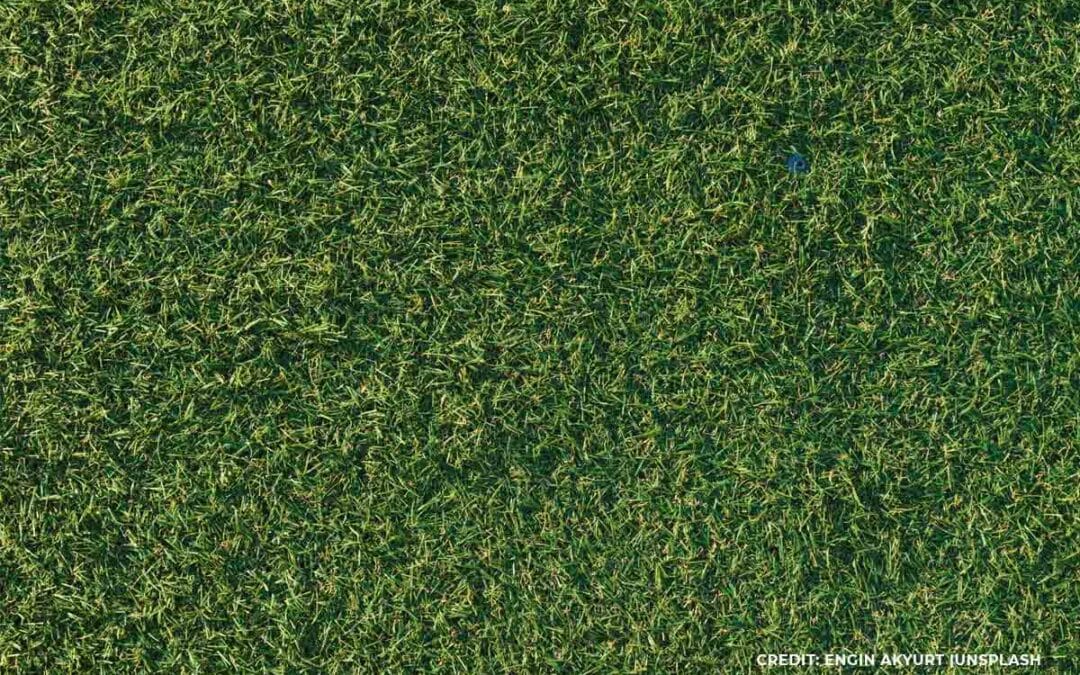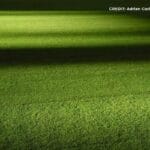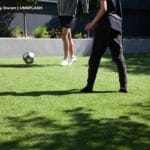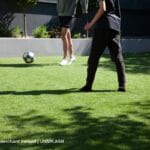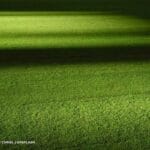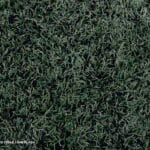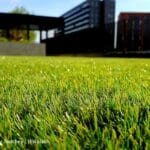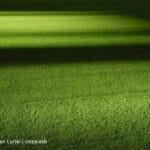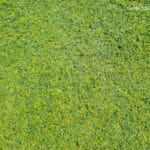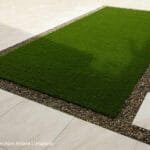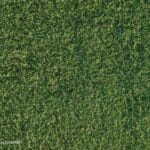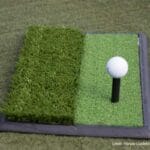For the homeowner looking for a cost-effective alternative to natural grass (that doesn’t sacrifice the look or feel of the real thing), there’s always synthetic grass. Synthetic lawns offer a low-maintenance alternative to natural grass, but that isn’t the same as no-maintenance. Artificial grass still requires some degree of care to ensure longevity, maintain a pristine appearance, and boost your home’s curb appeal (as it’s meant to). Like any other part of your home, regular (and proper) maintenance is key to keeping your artificial turf looking vibrant and performing optimally for years to come. Here’s a comprehensive guide to maintaining your synthetic lawn.
Regular Brushing and Grooming:
One of the most essential aspects of synthetic lawn maintenance is regular brushing. It’s this brushing that helps to keep the fibers upright, preventing them from matting down and maintaining the natural, lush look that makes your turf looking like the real deal. For maximum effectiveness, use a stiff, non-metallic brush or a power broom; these tools are usually designed specifically for artificial turf to avoid damaging their fibers. To lift the fibers properly, take care to brush against their grain. This measure is especially important in high-traffic areas where the fibers tend to flatten more quickly.
Proper grooming also involves removing debris such as leaves, twigs, and other organic matter. For this task, you can use a plastic rake or leaf blower. Avoid using metal rales as they can damage the synthetic fibers. For maximum effectiveness, schedule brushing and debris removal at least once a week (or more frequently during periods of heavy leaf fall).
Cleaning and Stain Removal:
Despite its resilience, synthetic grass can accumulate dirt and stains. Prompt cleaning is crucial for removing dirt before it can stain permanently, allowing your grass to maintain its appearance. For general cleaning, use a garden hose to rinse the lawn and wash the dirt away. A mild detergent mixed with water can be used for more stubborn dirt. Ensure you rinse thoroughly after cleaning to remove all soap residue.
For pet waste, it’s vital you remove solid waste immediately; this is true even if you’ve specifically invested in pet-friendly artificial grass (to preserve its appearance and prevent build-up of foul smells). Rinse the area with a mixture of water and a mild disinfectant or enzyme cleaner designed for artificial turf. Not only do these cleaners neutralize odours (removing any foul smells from your turf), they also break down organic matter and prevent unsightly stains. Avoid using harsh chemicals like blech; these chemicals can damage the synthetic fibers and backing.
Stains from food, drinks, or other substances are other messes that should always be addressed quickly. Blot any stains with a clean cloth or paper towel first, For more persistent stains, use a mild detergent solution, and rinse the area thoroughly. Avoid using abrasive cleaners or scrubbing vigorously, as this can damage the fibers.
Weed Prevention and Control:
While synthetic lawns significantly reduce weed growth, weeds can still sprout (usually in the drainage holes or around the edges). Check your lawn for weed growth regularly and deal with them promptly. Small weeds you can pull out yourself by hand, while larger ones may require a garden trowel to dig out properly.
Consider applying a pre-emergent herbicide around the perimeter of the lawn to prevent weeds from germinating. Check the herbicide first to verify that it’s compatible with synthetic turf and follow the manufacturer’s instructions carefully to minimize risk to the area.
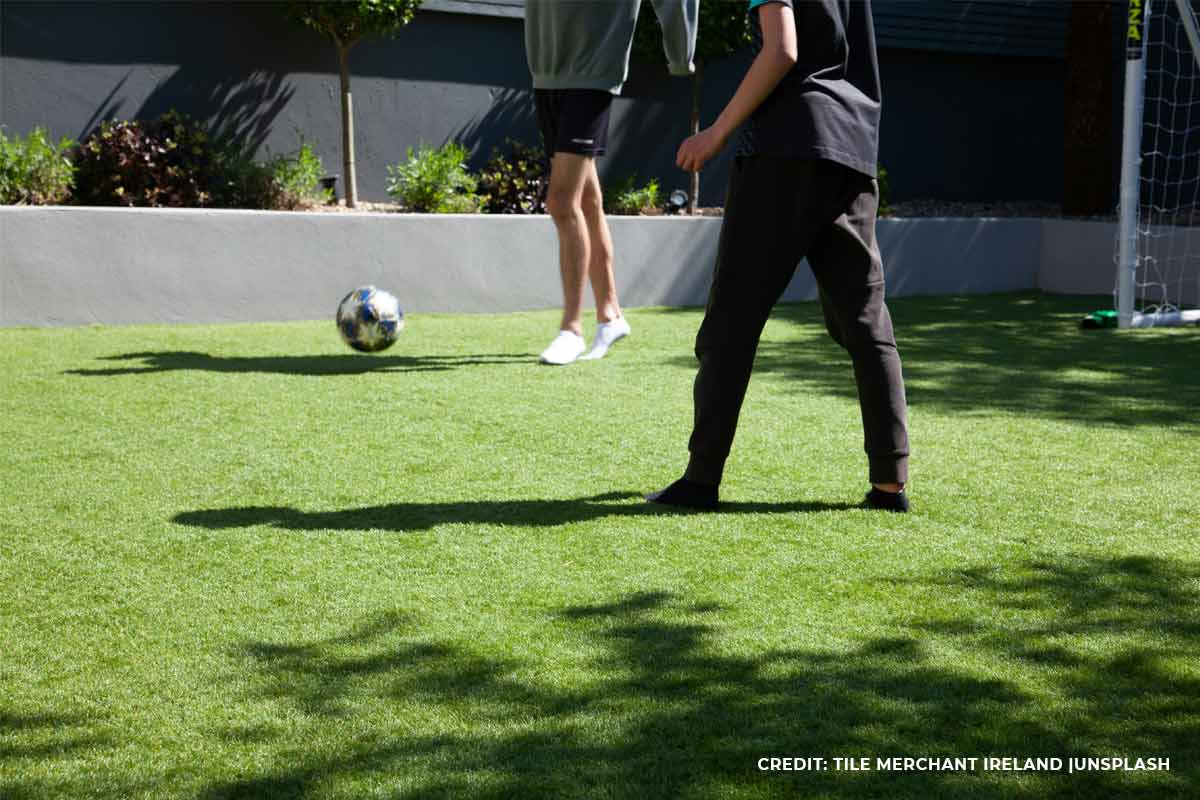
Addressing Matting and Compaction:
High-traffic areas can experience matting and compaction over time. To address this, use a power broom or a specialized infill rake to loosen the infill and lift the fibers. Make sure to distribute the infill evenly when adding soil under the turf to maintain the lawn’s stability and appearance.
Infill (which is usually made of silica sand or crumb rubber) plays a crucial role in supporting the fibers and providing stability. Check the infill level periodically and replenish it as needed. An even layer of infill is key to keeping the fibers upright and preventing excessive wear.
Preventing Mould and Mildew:
In damp or shaded areas (such as improperly-dried artificial turf), mould and mildew can develop. Ensure your lawn has proper drainage to prevent water from pooling on the lawn and encouraging mould. Regularly inspect the lawn for signs of mould or mildew as well; some common signs to watch for include discolouration or a musty odour.
If mould or mildew is present, clean the affected area with a mixture of water and a mild fungicide designed for synthetic turf. Afterward, ensure the area is well-ventilated to prevent recurrence.
Protecting Against Damage:
While synthetic lawns are durable, they can still be damaged by excessive heat or sharp objects. Avoid placing hot objects (such as barbecues or fire pits) directly on the lawn. Use a protective mat or place them on a paved surface.
Sharp objects (such as gardening tools or metal furniture legs) can also damage the synthetic fibers. Use protective caps or mats to prevent scratches and tears.
Seasonal Maintenance:
Seasonal changes can affect your synthetic lawn. During autumn, focus on removing fallen leaves and debris to prevent them from matting down and causing mould growth. In winter, it’s vital you continue your regular maintenance. Other ways you can spare your grass winter damage is to refrain from using deicers or walking on the lawn when it is frozen, as this can damage the fibers.
In spring, give the lawn a thorough cleaning and brushing to remove any accumulated debris and lift the fibers. Check the infill level and replenish it as needed. In summer, ensure the lawn is adequately rinsed to remove dirt and sweat, especially after heavy use.

By following these tips and tricks, you can maintain your synthetic lawn’s pristine appearance and ensure its longevity. Regular cleaning, brushing, and addressing potential issues promptly will keep your artificial turf looking its best for years to come, providing a beautiful and low-maintenance outdoor space.
When you’re looking for quality synthetic turf to help beautify your home (and cut down on upkeep around the house), look no further than Lazy Lawn. We carry a wide range of artificial grass for a wide range of uses, from laying on the lawn to creating a green retreat in indoor spaces like balconies or terraces. Give us a call now at (888) 622-5296 to find the right grass for your home.

